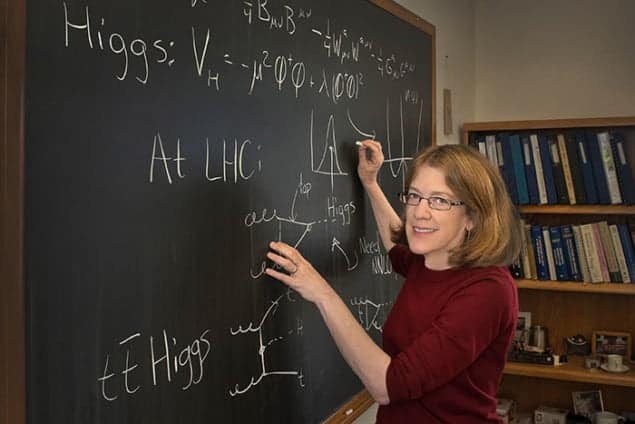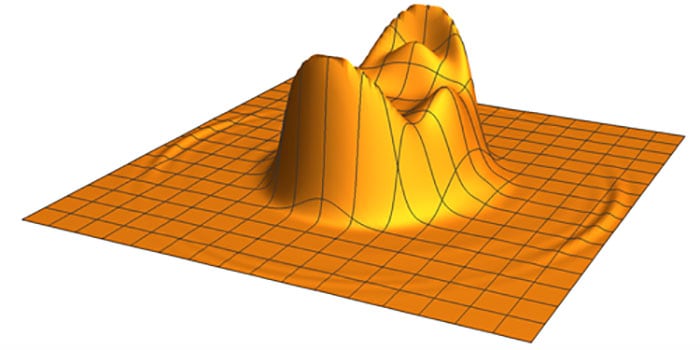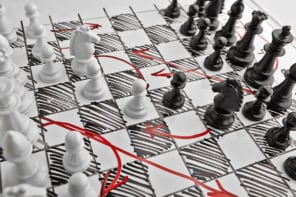Flash Physics is our daily pick of the latest need-to-know developments from the global physics community selected by Physics World‘s team of editors and reporters

Particle-physics pioneers bag J J Sakurai Prize
The American Physical Society’s J J Sakurai Prize for Theoretical Particle Physics has been awarded to Sally Dawson of Brookhaven National Laboratory, Gordon Kane of the University of Michigan, Howard Haber of the University of California, Santa Cruz, and John Gunion of the University of California, Davis, all in the US, for “instrumental contributions to the theory of the properties, reactions, and signatures of the Higgs boson”. All four winners also authored The Higgs Hunter’s Guide, an important book first published in 1989 that detailed the physics of the then-elusive Higgs particle. “It’s a great honour to receive this award with such distinguished scientists,” says Dawson. She also highlighted the importance of theoretical work, saying that “you never would have found the Higgs if you didn’t know what you were looking for. The searches were based on years of calculations and the detectors were designed to find this thing based on that theoretical work, which is still ongoing.” The quartet will receive their award, which consists of $10,000 to be shared and certificates citing their achievements, at a ceremony next January in Washington, DC.
Brian Bowsher appointed new head of Science and Technology Facilities Council
Brian Bowsher has been appointed as the chief executive of the UK Science and Technology Facilities Council (STFC) and will take up the post from next month. Bowsher will replace current head John Womersley, who has been appointed the next director-general of the European Spallation Source research facility. Bowsher was previously the managing director of the National Physical Laboratory, for more six years. “Bowsher is a highly respected scientist, with extensive experience leading world-class science laboratories, managing major science facilities and representing the UK on an international stage,” says science-minister Jo Johnson. “As a member of the STFC Council, he is already familiar with the organization, making him the ideal person to promote the UK’s scientific expertise and extend our international collaborations.” Bowsher received his PhD in inorganic chemistry from the University of Southampton in 1981, and has published extensively on materials, chemistry and nuclear-fuel issues. “It is an honour to be asked to lead the STFC and drive scientific research with our partners, both in the UK and internationally,” says Bowsher, who was first appointed to the STFC Council in May 2013.
Could colliding light-waves create magnetic monopoles?

Ever since famous physicist Paul Dirac first predicted the existence of magnetic monopoles in 1931, physicists have looked high and low for these elusive particles. Dirac predicted the existence of a monopole as a way of explaining electric-charge quantization and finding them could help researchers to move towards unifying fundamental forces. Indeed, scientists have looked everywhere from particle accelerators to polar rocks to “spin ices” and have even tried creating them in the lab – all of the searchers in nature have ended in vain. Now, theorist Tanmay Vachaspati from Arizona State University in the US says that monopoles may form via wave collisions of force-carrying particles like photons. He calculated that it may be possible to see signatures of monopoles emerging from the collisions of two circularly polarized, high-intensity laser beams. Vachaspati’s simulations showed that monopoles formed as cratered peaks in the energy density in the wake of a head-on collision and that isolated North- or South-Pole magnetic fields formed around the peaks. The research is published in Physical Review Letters.
- You can find all our daily Flash Physics posts in the website’s news section, as well as on Twitter and Facebook using #FlashPhysics. Tune in to physicsworld.com later today to read today’s extensive news story on creating acoustic holograms.



